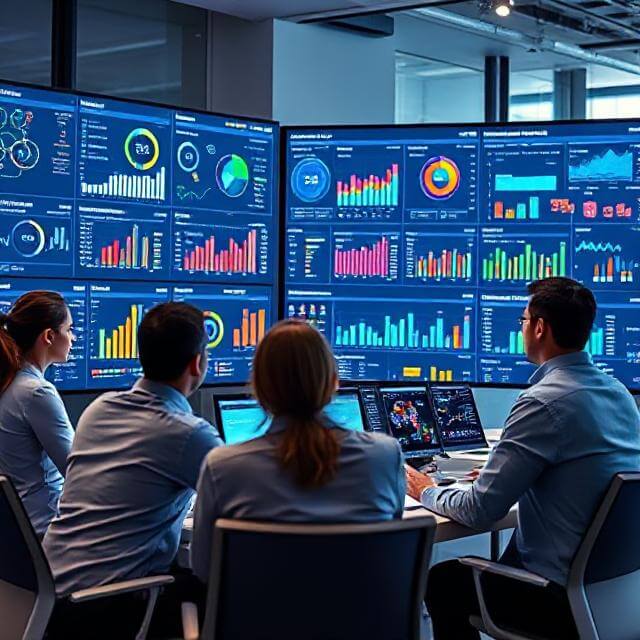🛰️ The International Space Station (ISS) – A Comprehensive Guide
🌍 Introduction: The International Space Station – Humanity’s Space Outpost
The International Space Station (ISS) is a marvel of human engineering and scientific collaboration. Orbiting 400 kilometers (248 miles) above Earth, it serves as a microgravity and space environment research laboratory, where scientists conduct experiments that would be impossible on Earth. The ISS is not just a symbol of international cooperation but also a glimpse into the future of space exploration and technology.
In this comprehensive guide, we will explore the history, construction, purpose, scientific research, and fascinating facts about the International Space Station.
🚀 1. The History of the ISS: From Vision to Reality
🌌 The Origins and Planning:
- The concept of a permanently crewed space station originated during the Cold War era.
- In 1984, then-President Ronald Reagan proposed the Space Station Freedom, which eventually evolved into the ISS project.
- In 1993, the US and Russia agreed to merge their respective space station projects, forming the foundation for the ISS.
- The ISS became a joint effort between NASA, Roscosmos (Russia), ESA (European Space Agency), JAXA (Japan), and CSA (Canada).
🔥 Construction and Assembly:
- The first module, Zarya, was launched by Russia in 1998.
- The Unity module, built by the US, was added soon after.
- Over 30 missions delivered and assembled various modules, solar arrays, and laboratories.
- The ISS became habitable in 2000, with the arrival of the first crew: Expedition 1.
- Continuous human presence has been maintained on the ISS since then.

🌐 2. Structure and Components of the ISS
The ISS is an enormous structure composed of various interconnected modules and external elements.
🛸 Major Components:
- Pressurized Modules: These house the crew, laboratories, and living quarters.
- Truss Structure: The backbone of the ISS, supporting the solar panels and radiators.
- Solar Arrays: Massive solar panels generate electrical power for the station.
- Docking Ports: Used by spacecraft bringing cargo and crew.
🛰️ Key Modules:
- Zvezda (Russia): The service module, providing life support and crew quarters.
- Destiny (USA): The primary US laboratory.
- Columbus (ESA): The European lab for conducting scientific experiments.
- Kibo (Japan): The Japanese experiment module.
- Harmony and Tranquility (USA): Nodes connecting various parts of the station.
- Quest (USA): The airlock used for spacewalks.
🌌 Size and Dimensions:
- The ISS measures approximately 109 meters (356 feet) end to end.
- It weighs about 420,000 kg (925,000 lbs).
- It has a living space equivalent to a six-bedroom house.
🔬 3. Scientific Research and Experiments on the ISS
The ISS serves as a cutting-edge laboratory for scientific experiments in microgravity.
🔥 Biological and Medical Research:
- Studying human health: Experiments on bone density, muscle atrophy, and immune response in microgravity.
- Drug testing: Testing pharmaceutical products in a microgravity environment.
- Cell and tissue growth: Research on how microgravity affects cellular development.
🌌 Physics and Material Science:
- Fluid dynamics: Observing how liquids behave in low gravity.
- Combustion science: Studying fire behavior in microgravity.
- Material testing: Experimenting with new materials for spacecraft and other uses.
🌿 Earth and Space Observation:
- Climate monitoring: Studying weather patterns, hurricanes, and desertification.
- Cosmic radiation studies: Measuring space radiation and its effects on astronauts.
- Space weather: Analyzing solar storms and their impact on Earth’s atmosphere.
👩🚀 4. Life Aboard the ISS: The Astronaut Experience
🌍 Daily Routine:
- Astronauts aboard the ISS follow a structured routine.
- Wake-up call: Around 6 AM GMT, followed by breakfast.
- Work hours: Science experiments, maintenance, and exercise.
- Leisure time: Evenings are for personal time, communication with family, and relaxation.
🚀 Exercise and Fitness:
- Due to muscle atrophy in microgravity, astronauts exercise for 2 hours daily.
- Equipment includes:
- Treadmills with harnesses to prevent floating.
- Resistance machines simulating weight lifting.
🍲 Food and Nutrition:
- Astronauts consume specially prepared, freeze-dried, or vacuum-sealed food.
- Fresh food is occasionally delivered by cargo missions.
- Meals must be compact, nutritious, and easy to rehydrate.
💤 Sleeping in Space:
- Astronauts sleep in sleeping bags attached to walls.
- They experience 16 sunrises and sunsets daily due to the ISS orbiting Earth every 90 minutes.
🌌 5. Spacewalks and Extravehicular Activities (EVAs)
🚀 Purpose of Spacewalks:
- Maintenance and repairs: Fixing equipment, solar panels, and modules.
- Scientific experiments: Installing and removing instruments.
- Upgrades: Upgrading hardware and adding new components.
🧑🚀 Spacewalk Suits:
- Astronauts wear EMU suits (Extravehicular Mobility Units).
- The suits provide oxygen, temperature regulation, and protection from space hazards.
🌐 6. International Collaboration and Politics
🌍 Participating Countries:
- NASA (USA): Responsible for core systems, transportation, and scientific research.
- Roscosmos (Russia): Provides crew transport and station modules.
- ESA (Europe): Contributes scientific modules and funding.
- JAXA (Japan): Provides the Kibo module and resupply missions.
- CSA (Canada): Known for the Canadarm2, a robotic arm used for repairs and cargo handling.
🔥 Political and Financial Challenges:
- The ISS costs over $150 billion to build and maintain.
- Political tensions sometimes affect collaborations but do not hinder operations.
🌠 7. The Future of the ISS and Beyond
🌌 Potential Decommissioning:
- The ISS is expected to remain operational until at least 2030.
- NASA and other agencies are considering commercial space stations as successors.
🚀 Commercial Involvement:
- Companies like SpaceX and Blue Origin aim to build private space stations.
- Space tourism missions to the ISS are already underway.
🌐 Gateway Station:
- The planned Lunar Gateway is part of NASA’s Artemis program.
- It will serve as a staging post for missions to the Moon and Mars.
✅ Key Takeaways: The International Space Station (ISS)
- The ISS is a collaborative effort involving multiple countries.
- It serves as a platform for scientific research, technological advancement, and space exploration.
- Life on the ISS involves rigorous routines, exercise, and scientific work.
- The station continues to inspire future missions and space exploration endeavors.
🌟 FAQs About the ISS
Q: How fast does the ISS orbit the Earth?
A: The ISS orbits Earth at 28,000 km/h (17,500 mph), completing one orbit every 90 minutes.
Q: How many astronauts are on the ISS?
A: The crew typically consists of 6-7 astronauts, but this can vary depending on missions.
Q: Can you see the ISS from Earth?
A: Yes, the ISS is visible as a bright, fast-moving light in the night sky.
✅ SEO Keywords: International Space Station, ISS facts, life on ISS, space exploration, science experiments in space, ISS construction
📢 Let me know if you need any revisions or more details! 🚀




